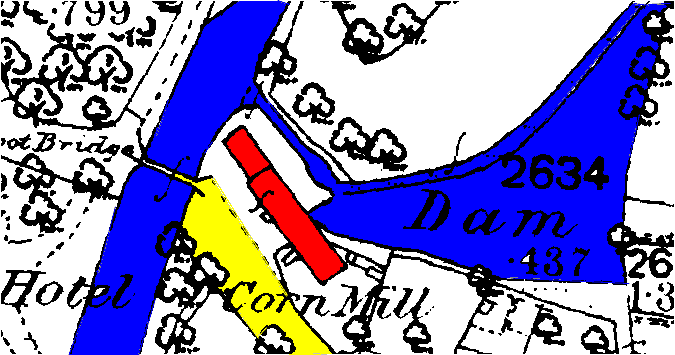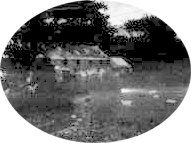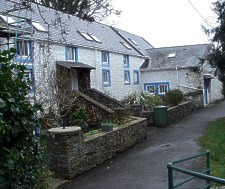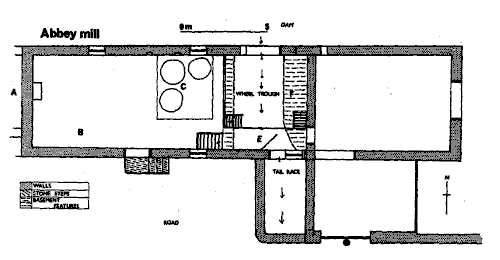(62) Abbey Mill

From 1868 O/S XVI/8 - SC 279703
|

Abbey Mill 1899
viewed from across the dam

view from footbridge 2024
The entrance now has a walled flight of steps - in the
corner, centre picture, there is a narrow arched doorway into cellar
level which was the site of the mill race the west wall of which has
been removed.
|
Issued as a brief report in Vol VII #4 p734 of Proceedings IoMNH&ASoc
ABBEY MILL, BALLASALLA, Malew - GBM 24/062 SC279703
History
This is likely to occupy one of the older mill sites in Man but, as a monastic
mill, was not subject to Lord's Rent and thus is not recorded in the earlier
manorial rolls. After being secularised it worked with very considerable success,
often in conjunction with the Creg mill but finally ceased work when its dam
was breached by floods. In its final form the take off point for its leat was
behind a dam of cut stone, like that surviving at the site of the Ochre and
Umber mill (the next mill upstream), and the totally enclosed wheel was more
or less centrally placed. It is probable that an earlier date the wheel was
on the gable end of the building, possibly directly in the river.
Further research on the history of the mill is required.
The Site
The range of buildings lie at an angle to the river with the kiln partly brick
built and almost the newest part of the mill, nearest the bank. The main working
floor of the mill is reached by a flight of steps of which the top-most is a
re-used millstone. The kiln has a basement, containing the heating apparatus,
with a vaulted slate roof like that at Mullin e Quinney, Santon, and a floor
of perforated tiles. The east end of the building has recently been reconstructed
and the machinery had gone when Dr. Garrad took measurements in December 1969.
There was provision for machinery at this end, powered by the same wheel, which
at various times probably threshed, ground bark for tan pits and broke flax.
The buildings are of local stone, colour washed (subsequently whitewashed) with
a slate roof and bricked gables, which seem to be an eighteenth or early nineteenth
architectural feature. The cast iron wheel is probably nineteenth century.





